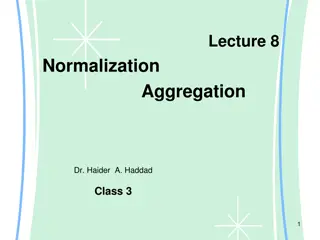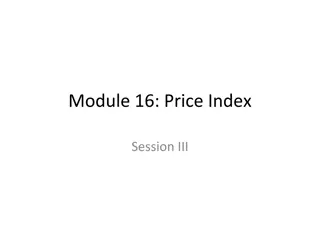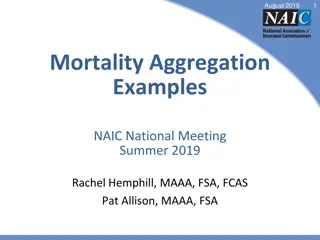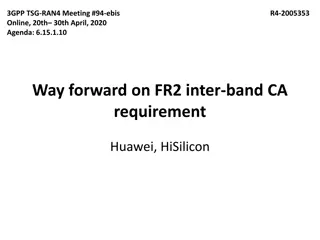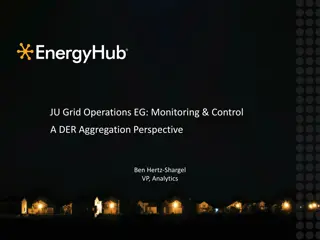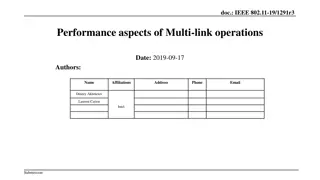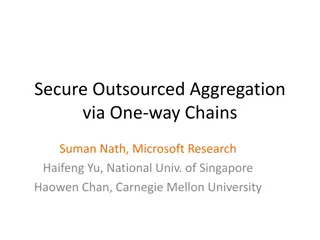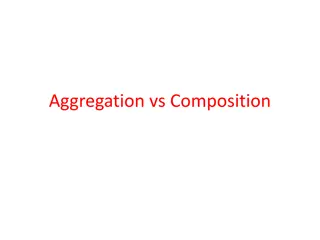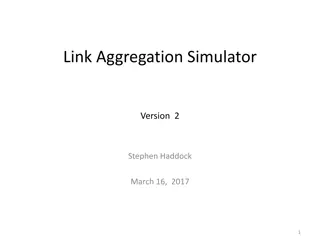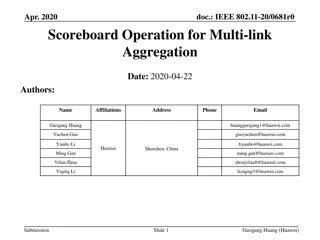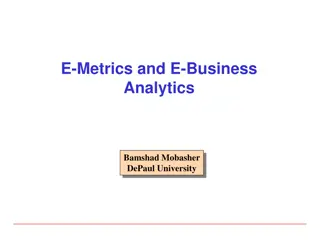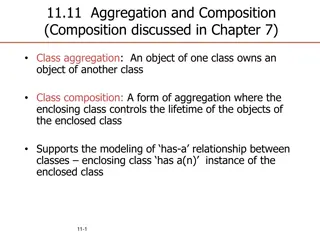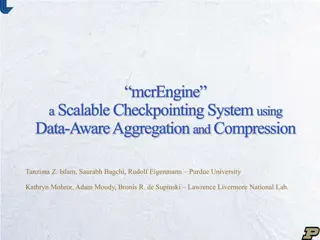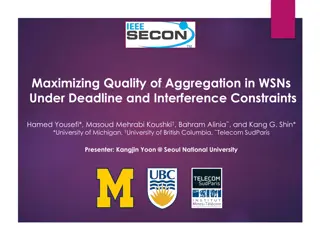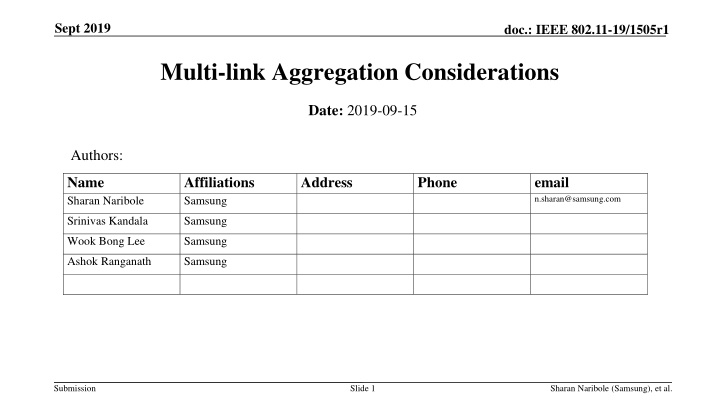
IEEE 802.11-19/1505r1 Multi-link Aggregation Considerations
Explore the impact and benefits of multi-link aggregation in IEEE 802.11-19/1505r1 standard, focusing on boosting throughput and minimizing negotiation overhead. The presentation discusses backoff procedures, unidirectional aggregation, and considerations for both single link and multi-link STAs within a BSS.
Uploaded on | 0 Views
Download Presentation

Please find below an Image/Link to download the presentation.
The content on the website is provided AS IS for your information and personal use only. It may not be sold, licensed, or shared on other websites without obtaining consent from the author. If you encounter any issues during the download, it is possible that the publisher has removed the file from their server.
You are allowed to download the files provided on this website for personal or commercial use, subject to the condition that they are used lawfully. All files are the property of their respective owners.
The content on the website is provided AS IS for your information and personal use only. It may not be sold, licensed, or shared on other websites without obtaining consent from the author.
E N D
Presentation Transcript
Sept 2019 doc.: IEEE 802.11-19/1505r1 Multi-link Aggregation Considerations Date: 2019-09-15 Authors: Name Sharan Naribole Affiliations Samsung Address Phone email n.sharan@samsung.com Srinivas Kandala Samsung Wook Bong Lee Samsung Ashok Ranganath Samsung Submission Slide 1 Sharan Naribole (Samsung), et al.
Sept 2019 doc.: IEEE 802.11-19/1505r1 Introduction Multi-link Operation o Key candidate feature of TGbe o Transmission of frames of a TID over multiple links [1] o Minimizing negotiation overhead for fast link switching [2] Multi-link Aggregation o Mechanism to boost high throughput applications o Link with backoff countdown to 0 can aggregate second link if idle (e.g. for PIFS) o Per-link PPDU provides more flexibility due to diverse link conditions TXOP TXOP BUSY link A ML STA 3 2 1 0 6 5 4 9 8 7 6 BUSY TXOP BUSY link B 5 4 3 2 1 0 Submission Slide 2 Sharan Naribole (Samsung), et al.
Sept 2019 doc.: IEEE 802.11-19/1505r1 Multi-link Aggregation Impact Promising multi-link gain provided by aggregation [4, 5] In addition, we need to consider multi-link BSS with varying distribution of single link STAs and multi-link STAs In this presentation, we consider the impact of multi-link aggregation on single link STAs in multi-link BSS Submission Slide 3 Sharan Naribole (Samsung), et al.
Sept 2019 doc.: IEEE 802.11-19/1505r1 Aggregated link Backoff Procedure In single link operation, CW resets to CW min upon successful transmission Backoff counter did not reach zero on aggregated link prior to TXOP Resetting CW to CW min on aggregated link can be unfair to single link STAs Proposal: CW remains same as prior to TXOP on aggregated link and backoff counter resumes from value prior to TXOP Failed transmission case can follow existing backoff procedure Backoff countdown resumes with same value link A TXOP TXOP busy 3 2 1 0 9 8 7 6 5 4 3 ML STA TXOP: ML STA s TXOP Busy: other traffic busy TXOP link B busy 5 4 3 2 1 0 Submission Slide 4 Sharan Naribole (Samsung), et al.
Sept 2019 doc.: IEEE 802.11-19/1505r1 Unidirectional Aggregation Aggregation considered so far is bi-directional (link A invites link B and vice versa) Scenario: Single link STAs operating on link A and multi-link aggregation enabled In worst case, starvation of single link STAs if link B has no traffic other than of ML STAs o Mean backoff value on link B is smaller than mean backoff value on link A o Access delay on link B is smaller than access delay on link A Proposal: Unidirectional Aggregation mode o Aggregation limited from link A to link B o Link A with backoff 0 can aggregate link B if link B is idle o Link B with backoff 0 cannot aggregate link A even if link A is idle link A TXOP TXOP Single link STA ML STA TXOP: ML STA s TXOP Busy: other traffic 3 2 1 0 2 1 0 5 4 3 2 busy busy busy TXOP TXOP link B 2 1 0 Submission Slide 5 Sharan Naribole (Samsung), et al.
Sept 2019 doc.: IEEE 802.11-19/1505r1 Summary Fairness for single link STAs needs to be considered in design of multi-link aggregation protocol design Backoff procedure on aggregated link needs further consideration Unidirectional aggregation mode can benefit single link STAs in certain scenarios Submission Slide 6 Sharan Naribole (Samsung), et al.
Sept 2019 doc.: IEEE 802.11-19/1505r1 Straw Poll #1 Do you agree fairness for single link STAs needs important consideration in the design of multi-link aggregation protocols for TGbe? Submission Slide 7 Sharan Naribole (Samsung), et al.
Sept 2019 doc.: IEEE 802.11-19/1505r1 References [1] 11-19/979, EHT Multi-link Operation Follow-up [2] 11-19/822, Extremely Efficient Multi-band Operation [3] 11-19/1405, Multi-link Operation Channel Access Discussion [4] 11-19/764, Multi-link Aggregation Gain Analysis [5] 11-19/1291, Performance Aspects of Multi-link operations Submission Slide 8 Sharan Naribole (Samsung), et al.

